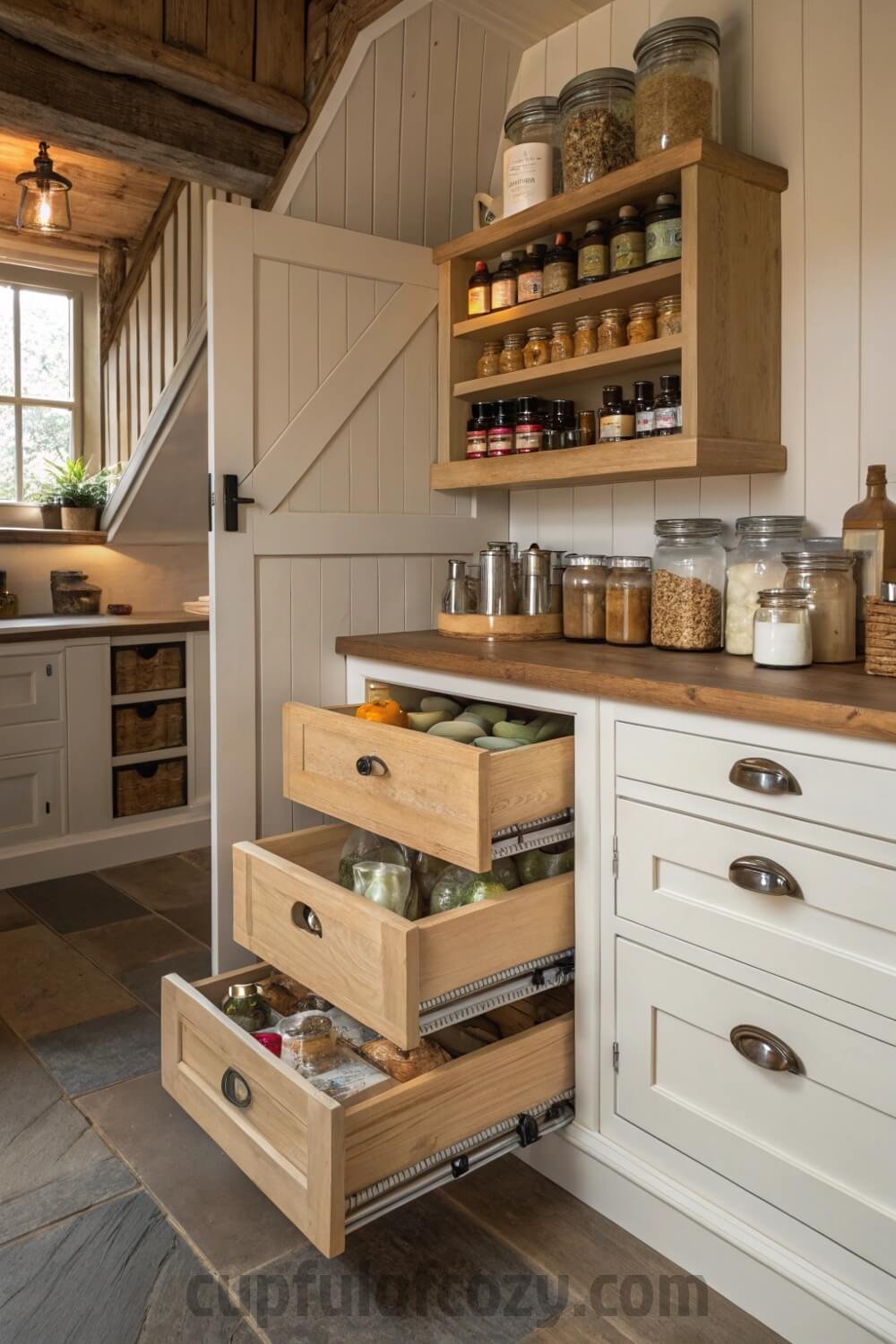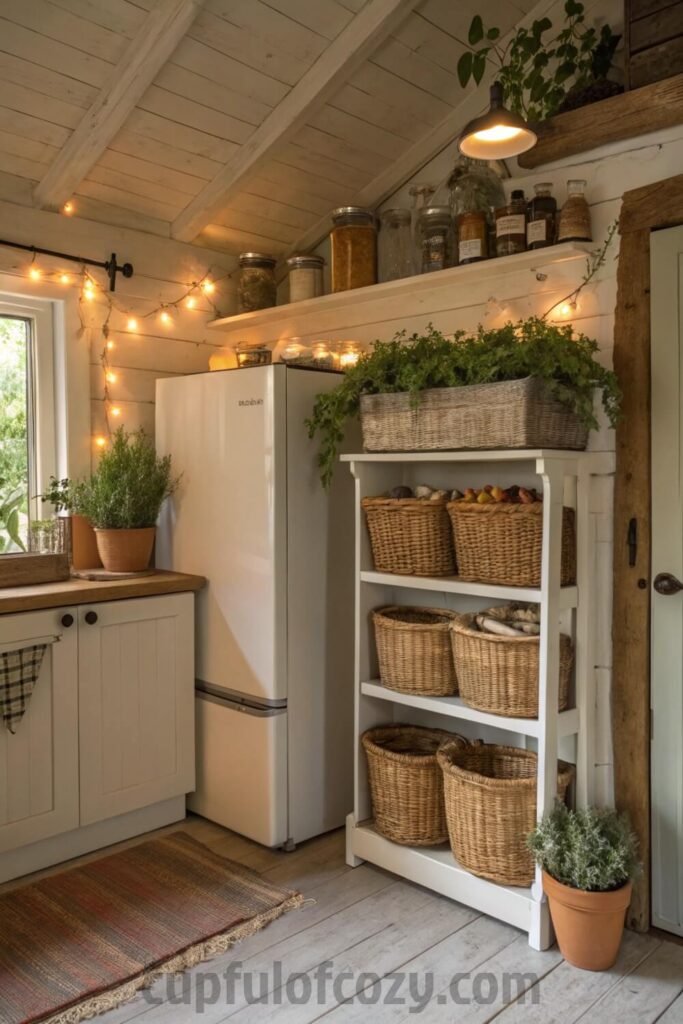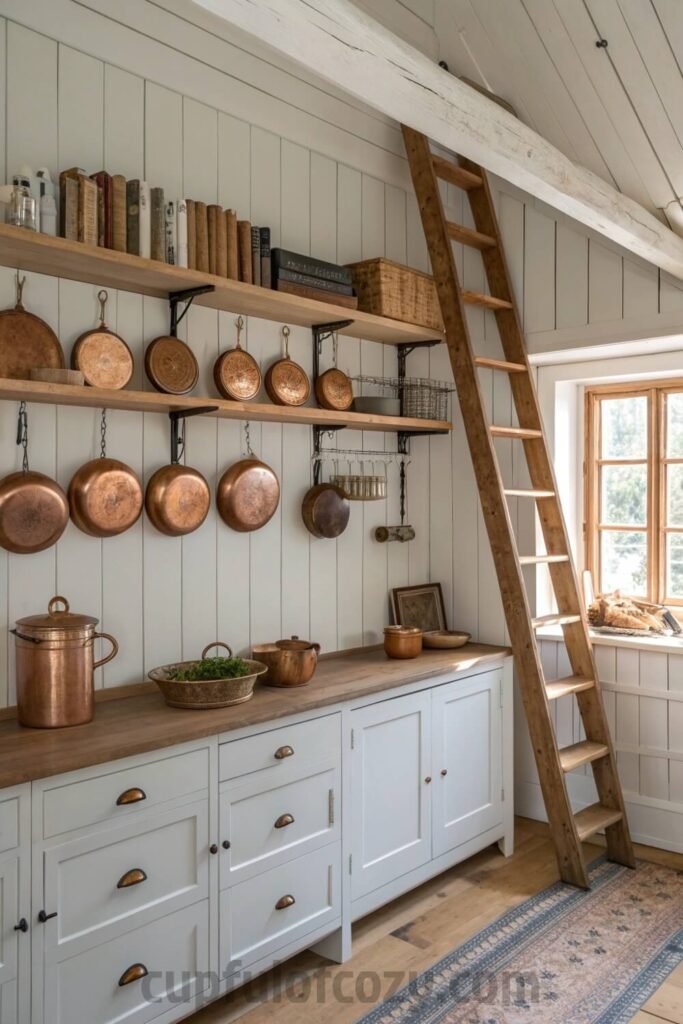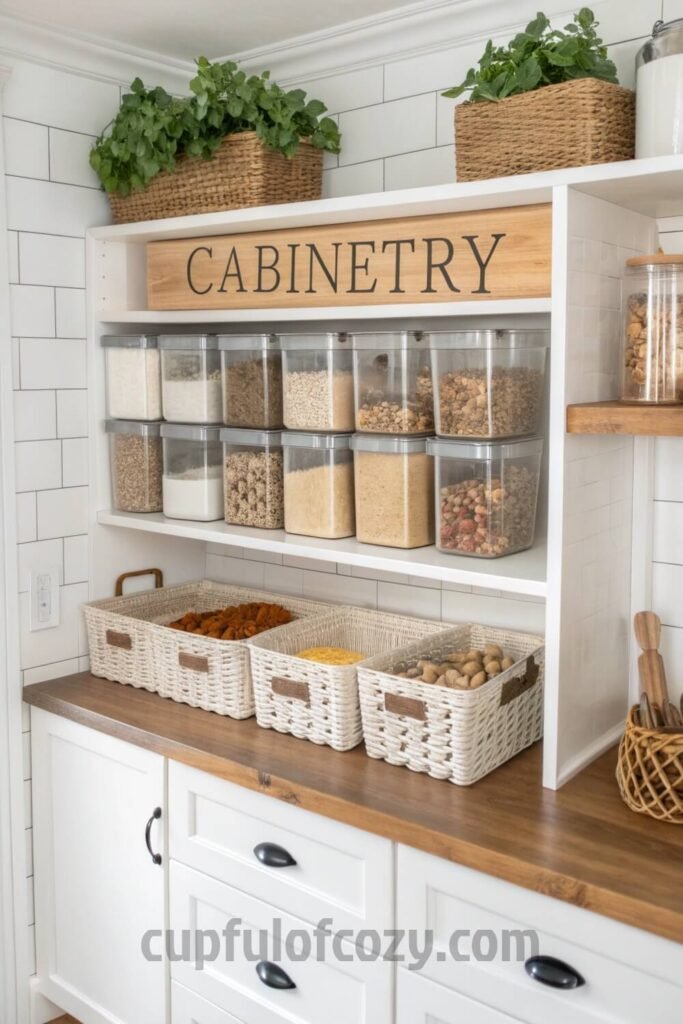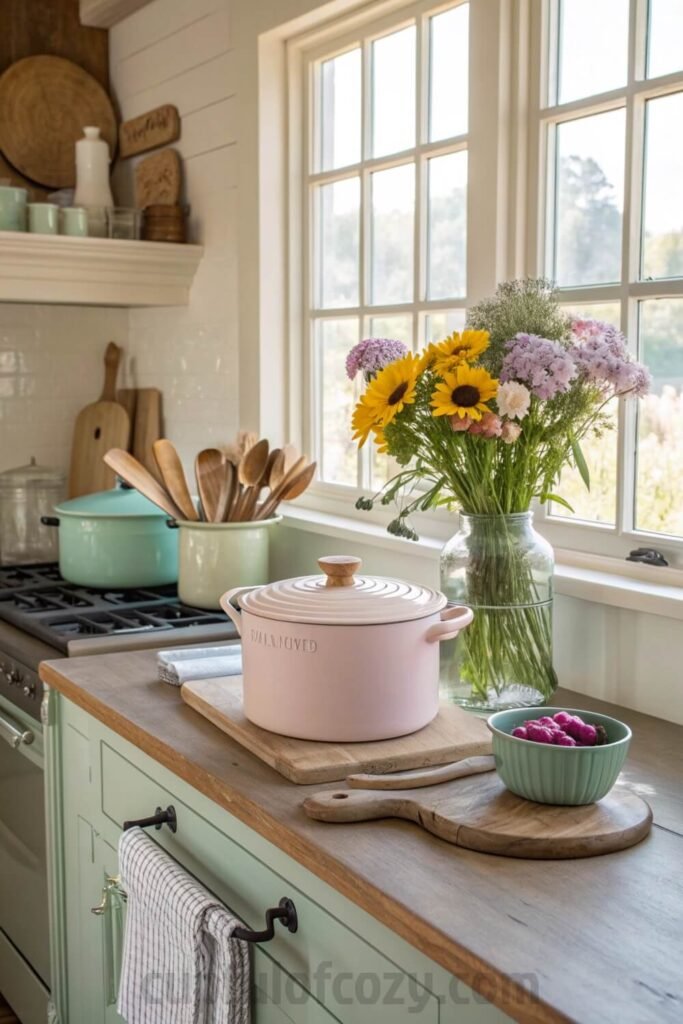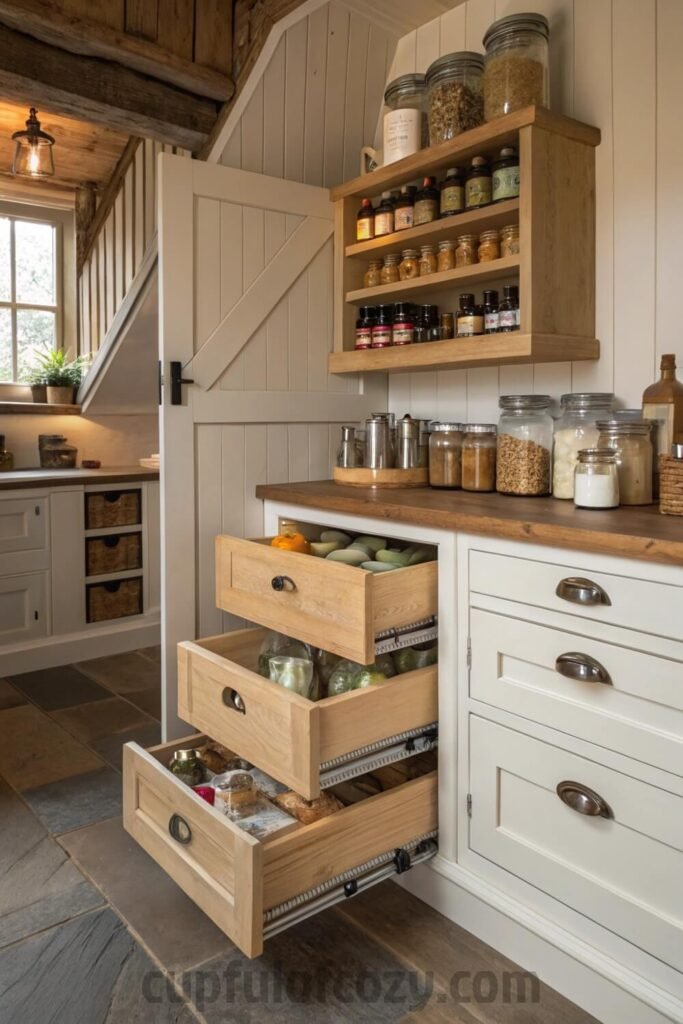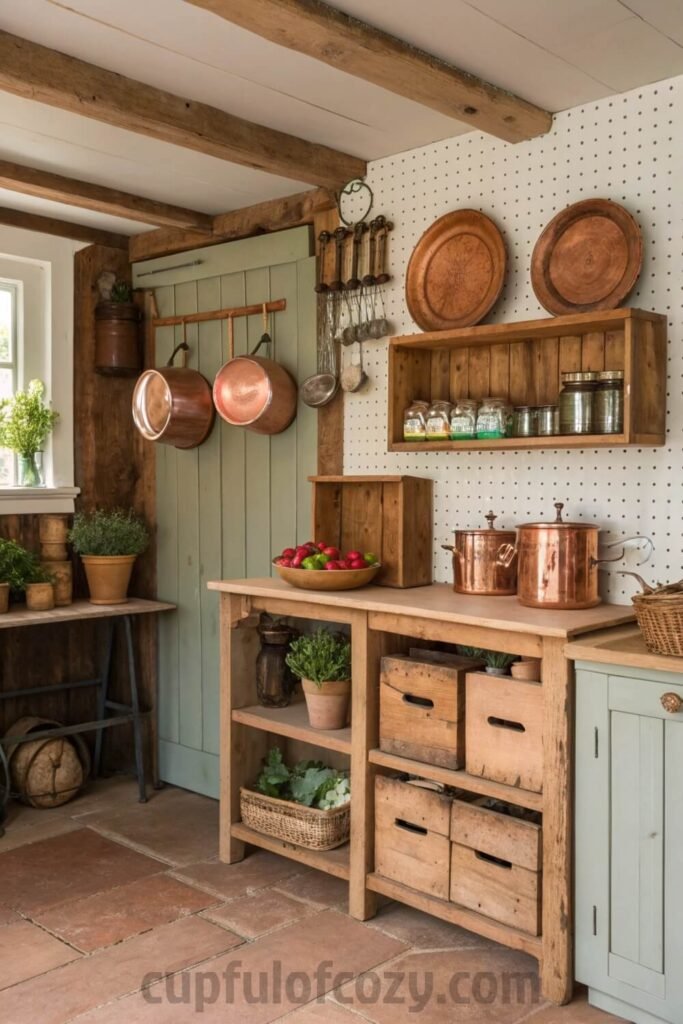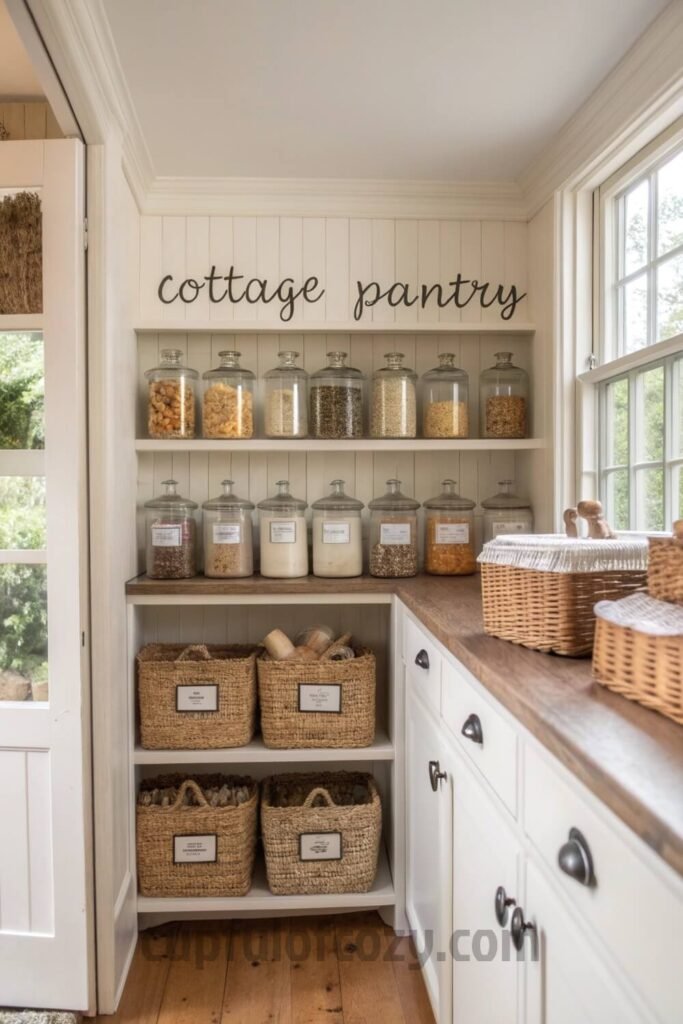You know that feeling when you walk into someone’s kitchen and it just feels like home? Like, you could curl up at their counter with a cup of coffee and talk for hours? That’s exactly what I was chasing when I started this whole kitchen transformation thing. My space used to be this chaotic mess of mismatched containers, stuff falling out of cabinets every time I opened them, and zero sense of flow or warmth. I’m talking about that specific kind of kitchen stress where you’re trying to cook dinner after a long day and you can’t find the olive oil, the spices are buried somewhere behind expired cans, and your good wooden spoons are lost in a drawer full of random utensils you never use.
It all started when my aunt invited me over for Thanksgiving prep last year. Walking into her kitchen felt like stepping into one of those cottage magazines, but lived-in and real. Everything had a place, but not in that cold, sterile way some organized kitchens feel. Her baskets weren’t perfectly matching, her containers weren’t all from the same brand, but somehow it all worked together like a warm, welcoming song. I remember standing there watching her pull ingredients from these beautiful woven baskets on her shelves, reaching for spices from vintage containers lined up on her counter, and opening drawers that actually slid out smoothly with everything visible and accessible. She wasn’t even trying to impress anyone, this was just how she lived every day.
That’s when it hit me: I’d been thinking about kitchen organization all wrong. I was so focused on hiding everything away, creating these perfect, empty surfaces that looked good in photos but made cooking feel like a chore. My aunt’s kitchen told stories. Her grandmother’s ceramic crock held wooden spoons worn smooth from decades of use. Baskets she’d collected from different trips organized her pantry in the most practical, beautiful way. Even her dish towels were folded in this casual, unstudied way that somehow looked better than any staged photo.
So I came home that night and really looked at my kitchen with fresh eyes. The cabinet doors that stuck, the deep shelves where things disappeared into black holes, the wasted space above my fridge that just collected dust. I realized I’d been living with all these little daily frustrations because I thought that’s just how small kitchens worked. But what if they didn’t have to?
The transformation didn’t happen overnight. I’m talking months of slowly figuring out what actually worked for how I cook, how I move through the space, what makes me happy when I’m making my morning coffee or prepping dinner after work. Some ideas I found scrolling through Instagram at 2am, others came from wandering through antique shops on weekend afternoons, and plenty were just born out of necessity when I got tired of something not working.
What surprised me most was how much the cottage aesthetic aligned with actual functionality. Those vintage-looking baskets weren’t just pretty, they were perfect for corralling all the random stuff that used to clutter my counters. The open shelving that looked so charming in photos actually made my everyday dishes more accessible than hiding them behind cabinet doors. Clear containers weren’t just Instagram-worthy, they kept my ingredients fresh and let me see when I was running low on something.
Now when friends come over, they linger in my kitchen the same way I lingered in my aunt’s. They run their hands along the wooden cutting boards displayed on my counter, peek into the labeled jars lined up on my open shelves, and ask where I found this basket or that vintage container. But more importantly, the space finally feels like mine. It tells the story of Sunday morning pancakes, late-night baking experiments, and all those weeknight dinners that taste better when you’re not fighting with your storage just to find what you need.
Baskets That Actually Work (Not Just Look Pretty)
My grandmother always said baskets were like good friends: they make everything better just by being around. She kept them everywhere in her house, and as a kid, I thought they were just decoration. Turns out she was onto something way before “cottage core” became a thing. The basket on top of my fridge has completely changed how I deal with grocery bags. Instead of that chaotic stuffing situation where reusable bags multiply and take over entire drawers, they all live in one beautiful spot that actually adds charm to the space.
Those peg rails everyone’s obsessing over? They’re not just trendy, they’re brilliant. I installed one by my back door after getting tired of garlic and onions rolling around loose in drawers. Now they hang in these small woven baskets where they can breathe properly and I can actually find them. My mom always kept garlic in some random cabinet where it would sprout these weird green shoots, but this way feels so much more intentional.
Inside my pantry, baskets have become my secret weapon against chaos. Different sizes hold everything from my embarrassingly large collection of canned tomatoes to the cloth napkins I started using because paper ones felt wasteful. Opening the pantry used to feel like a game of Jenga, but now everything sits in these cozy little containers that make even mundane stuff like backup pasta boxes look intentional.
Vertical Space That Changes Everything
Here’s what nobody told me about small kitchens: you’re probably only using about half your space. I lived for three years looking at these blank walls while complaining about not having enough storage. Then I finally installed open shelves above my sink, and suddenly my everyday dishes had a home that didn’t require opening and closing cabinet doors twenty times a day.
- Before you hit “buy” on your next decor order, there’s a free 10-second step you should never skip: checking Rakuten (Ebates). I simply find the store name, click the deal, and shop like normal, and Rakuten sends me real cashback! Prices keep climbing everywhere, but this is one way to get a little back on the things you were going to purchase anyway. New members even get a $30 bonus when they spend $30 — which means your first order could pay you back instantly. Don’t miss out again. Click here to sign up and save money!
*Disclosure: This post includes affiliate links. I may earn a small commission if you join Rakuten through my link — but it doesn’t cost you anything extra. In fact, you’ll actually save more!
The cast iron situation in my kitchen used to drive me crazy. These heavy, gorgeous pans living in a cabinet where I could barely lift them out. Now they hang on a peg rail above my stove, and every time I see them, I feel like I’m living in some charming farmhouse instead of a cramped apartment. Plus, they’re actually seasoning better hanging in the air instead of stacked in a humid cabinet.
That narrow pullout cabinet next to my stove was a revelation I discovered completely by accident. I was at my neighbor’s house, and she casually reached over and pulled out what I thought was just a sliver of wall space. Inside was this perfectly organized collection of oils, vinegars, and cooking wines. I installed one the next weekend, and now I have what feels like a secret pantry tucked into six inches of space.
I’m still dreaming about one of those library ladders for ceiling-height storage, but honestly, even just using the walls I have has doubled my storage capacity. That weird narrow space next to my window now holds wine in these simple wooden cubbies, and what used to be dead space above my coffee maker displays my favorite mugs where I can see them every morning.
Clear Containers That Ended My Pantry Nightmares
I used to be so stubborn about keeping everything in original packaging. Something about not wanting to waste containers, or maybe just not wanting to admit that my system wasn’t working. But let me tell you about the Saturday I finally broke down and transferred everything to clear, airtight containers. I’m not even exaggerating when I say it felt like getting a new kitchen.
Being able to see exactly how much rice, oats, or flour I have left has eliminated those moments when I’m halfway through a recipe and realize I don’t have enough of something. The stackable design means I can actually use all the vertical space in my cabinets instead of wasting the top half. And when my sister house-sits for me, she doesn’t have to text me asking where anything is because everything is visible and labeled.
Those wire baskets with bamboo tops were an impulse buy that turned into one of my smartest purchases. They stack beautifully on my counter and let produce breathe while still looking intentional. My potatoes aren’t sprouting in dark cabinets anymore, and my onions aren’t making everything else taste like onions because they have proper ventilation.
The label maker was honestly more fun than any organizing tool should be. I spent an entire Sunday afternoon labeling everything, and now my pantry looks like one of those specialty food stores where everything is perfectly curated. My niece said it looks more organized than the grocery store, which might be the best compliment I’ve ever gotten.
Counter Storage That Tells Stories
I spent years thinking clear counters were the holy grail of kitchen design, but now I realize hiding everything away just made cooking feel sterile and disconnected. The vintage ceramic crock that holds my wooden spoons sits right next to my stove where I can grab what I need without opening drawers. It’s this soft blue-gray color that makes me think of my grandmother’s kitchen, even though she never had anything quite like it.
My Dutch oven lives on the stove because it’s too beautiful to hide and I use it constantly anyway. There’s something so satisfying about having your most-used tools visible and accessible. Plus, it makes me feel like the kind of cook who has everything at her fingertips, even when I’m just reheating leftovers.
The flour canister I found at an estate sale sits by my coffee maker, and even though I don’t bake bread every week, it makes me feel connected to this whole lineage of women who did. Sometimes the emotional weight of an object is just as important as its function. It holds my good coffee beans now, and every morning when I scoop them out, I think about the hands that used it before mine.
Drawers That Actually Make Sense
Converting some of my lower shelves to pull-out drawers was one of those changes that seems small but revolutionizes how you use your space. No more getting on my hands and knees to reach things in the back of deep cabinets. Everything slides out smoothly, and I can see what I have at a glance.
Tiered shelf risers might sound boring, but they’ve completely changed my relationship with my spice collection. Instead of just seeing the front row and forgetting about everything behind it, I can see my whole arsenal laid out like a tiny grocery store. It makes cooking more creative because I remember what I have instead of defaulting to the same five spices every time.
Drawer separators keep my oils and vinegars from doing that annoying domino dance every time I open a cabinet. It’s one of those simple solutions that eliminates a daily micro-frustration you didn’t even realize was wearing you down.
Repurposed Pieces That Feel Like Home
The wooden crates hiding my less photogenic essentials came from a farmer’s market where I was actually shopping for tomatoes. The vendor mentioned they were getting rid of them, and something about their worn patina reminded me of my grandfather’s workshop. Now they hold backup paper towels and cleaning supplies, but they look like they’ve always belonged in a cottage kitchen instead of screaming “bulk shopping.”
My pegboard came from wandering through this tiny hardware store in a small town I was visiting. The owner was probably eighty years old and told me stories about how these used to be in every kitchen before built-in storage became standard. Now it holds my most-used pots and pans above the stove, and every time I reach for something, I think about all the kitchens it could have lived in before mine.
Systems That Actually Work for Real Life
Here’s what I’ve learned about organizing: it’s not about having perfect containers or color-coordinated everything. It’s about creating systems that make sense for how you actually live. I keep all my baking supplies together not because it looks neat, but because when I decide to make cookies at 9pm on a Tuesday, I don’t want to hunt through five different cabinets.
My oils and vinegars live in one pullout area because I use them almost every time I cook. Grains and legumes share shelf space because they often go into the same kinds of meals. It sounds obvious, but when you’re rushing to get dinner on the table after a long day, having things grouped logically can mean the difference between cooking something nourishing and ordering takeout again.
Labels aren’t just for looking organized, they’re for those moments when your brain is tired and you don’t want to open six containers to find the quinoa. They’re for when friends are helping in your kitchen and don’t need a treasure map to find the olive oil. They’re for Sunday morning coffee when you’re barely awake but still want to make something good.
The most wonderful part of this whole transformation is that my kitchen finally feels like an extension of who I am. It’s not trying to be some magazine-perfect space that’s too precious to actually use. It’s warm and functional and tells the story of someone who loves cooking, values beautiful things, and believes that the heart of a home should welcome both everyday chaos and special occasions with equal grace.
- Before buying anything online, check Rakuten (formerly Ebates) — either with the browser extension or directly on Rakuten.com. Just type in your store, click the current deal, and shop as usual. Every purchase earns you cashback that can be mailed to you or sent via PayPal. In today’s economy, even a few dollars back can turn into a Starbucks latte, McDonald’s fries for the kids, or a little treat you don’t have to budget for. If you’ve never used Rakuten before, you’re missing out on free money — and right now, you’ll even get a $30 bonus when you spend your first $30. Click here to sign up and stop letting your online orders steal from you. Click here to sign up and save money!
*Disclosure: This post includes affiliate links. I may earn a small commission if you join Rakuten through my link — but it doesn’t cost you anything extra. In fact, you’ll actually save more!

